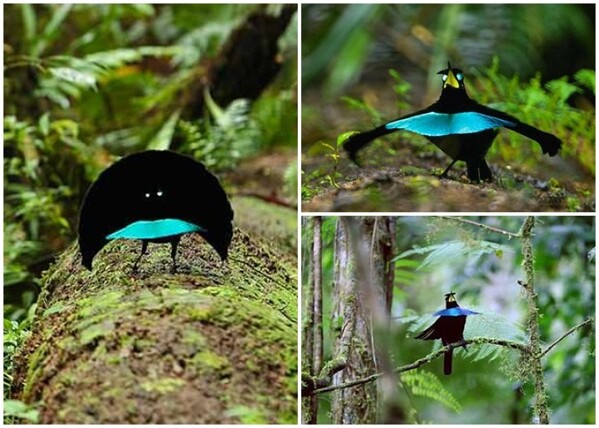Animals are full of surprises. From curious habits to jaw-dropping instincts, the animal kingdom never ceases to amaze us with its strange and often unexplainable behaviors. This article dives deep into the most unusual actions animals exhibit, exploring the science, cultural perceptions, and sheer wonder behind them.

Strange animal behaviors are actions or habits that may seem odd or inexplicable from a human perspective. These behaviors often serve critical roles in survival, reproduction, or communication, showcasing the complexity and adaptability of nature.
Core Concepts: Ethology (the study of animal behavior) provides insight into how and why animals act in such peculiar ways.
Examples: Why do birds dance? Why do Elephants-Are-Endangered.html">elephants mourn their dead? Why do crows use tools? Each behavior holds an intriguing story worth exploring.
Animals have developed unique ways to interact and share information, often using methods we can’t fully comprehend.
Dolphin Bubble Rings: dolphins.html">Dolphins create bubble rings as a playful communication tool.
Bee Waggle Dance: Bees perform intricate dances to inform others about food sources.
Elephant Low-Frequency Calls: Elephants communicate across miles using infrasound, inaudible to humans.
Some animals exhibit extraordinary techniques to find food or hunt prey.
Tool Use in Crows: Crows have been observed using sticks to extract insects from hard-to-reach places.
Octopus Tool Use: Octopuses use coconut shells as portable shelters.
Starfish Eversion: Starfish eject their stomachs to digest prey externally before reabsorbing it.
Survival often necessitates creative defensive strategies.
Opossum Playing Dead: When threatened, opossums mimic the appearance of death to deter predators.
Cuttlefish Camouflage: These marine creatures change colors and textures to blend seamlessly into their surroundings.
Lizard Tail Autotomy: Many lizards shed their tails to escape predators, leaving the tail wriggling as a distraction.
Courtship and mating bring out some of the most extravagant behaviors in the animal kingdom.
Bird Courtship Dances: Birds like the bird-of-paradise perform elaborate dances to attract mates.
Penguin Pebble Gifting: Male penguins present pebbles to potential mates as part of their courtship ritual.
Spider Gift Wrapping: Some male spiders wrap prey in silk as a "gift" to impress females.
Animals often display behaviors that suggest emotional intelligence or social bonding.
Elephant Mourning: Elephants grieve the loss of herd members and even perform “funeral-like” rituals.
Dolphin Friendship: dolphins.html">Dolphins form lifelong bonds, even helping sick or injured pod members.
Chimpanzee Politics: Chimps engage in complex social dynamics, including alliances and power struggles.
Strange animal behaviors often have deep evolutionary roots or scientific explanations.
Instinct vs. Learning: Some behaviors, like migration, are instinctive, while others, like tool use, are learned through observation.
Behavioral Ecology: The environment plays a significant role in shaping animal behavior, influencing everything from diet to mating habits.
Cognitive Abilities: Research into animal intelligence shows how behaviors often demonstrate problem-solving skills and creativity.
Elephant Compassion: Elephants have been known to help other species in distress.
Bats Pollinating Plants: Some bats play a crucial role in pollination, particularly for tropical fruits.
Lyrebird Mimicry: Lyrebirds can imitate almost any sound, including chainsaws and car alarms.
Owls Using Tools: Owls have been seen using dung to attract beetles, their primary prey.
Komodo Dragon Bacteria Hunting: Komodo dragons use the bacteria in their saliva as a biological weapon against prey.
Turtles Returning to Birth Beaches: Sea turtles instinctively return to the exact beach where they were born to lay their eggs.
Ant Bridge Formation: Certain ants create living bridges to help their colonies cross gaps.
Moth Suicide in Flame: The mysterious attraction of moths to light is still not fully understood but likely involves navigation instincts.
Fish Cleaning Symbiosis: Cleaner fish nibble parasites off larger fish, forming a mutualistic relationship.
Shrimp Flashing Light Defense: Pistol shrimp produce a stunning light display to confuse predators.
Throughout history, strange animal behaviors have inspired myths, folklore, and scientific curiosity.
Folklore: Ravens, known for their intelligence, often symbolize mystery and wisdom.
Modern Interpretations: Viral videos showcasing animals performing odd actions, such as a dancing bird or a playful otter, continue to captivate audiences worldwide.
Scientific Advancements: Ethologists like Jane Goodall have revolutionized our understanding of complex animal behaviors.
Animals such as raccoons and pigeons exhibit strange behaviors in urban settings, like opening trash cans or nesting in buildings.
Climate change and habitat loss are altering animal behaviors, forcing them to adapt in surprising ways.
Domesticated animals, like dogs chasing their tails or cats kneading, often display behaviors influenced by human presence.
Here are some jaw-dropping facts to surprise you:
Octopuses can open jars to retrieve food.
Hummingbirds remember every flower they visit.
Prairie dogs have a sophisticated "language" for warning each other of predators.
Animals continually surprise and inspire us with their strange and fascinating behaviors. From survival mechanisms to emotional displays, every behavior has a purpose, highlighting the incredible diversity of life on Earth.
Understanding these behaviors not only deepens our appreciation for wildlife but also underscores the importance of protecting their habitats and preserving biodiversity.
By diving into these extraordinary actions, we see that what might seem bizarre to us is perfectly natural—and essential—for these animals. So, the next time you see a bird dancing or a dolphin playing, remember, there's more to it than meets the eye!
animal tags: bird
We created this article in conjunction with AI technology, then made sure it was fact-checked and edited by a Animals Top editor.